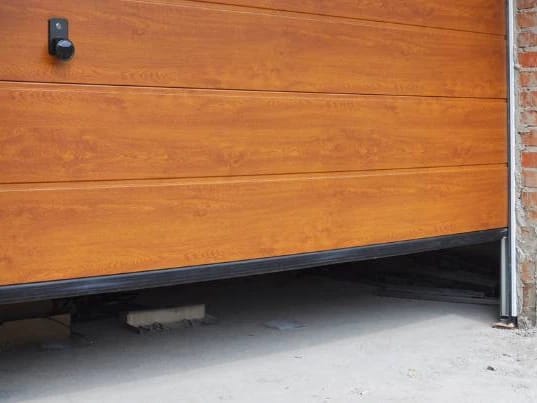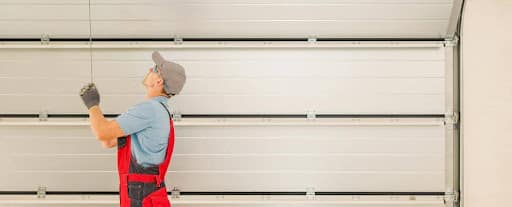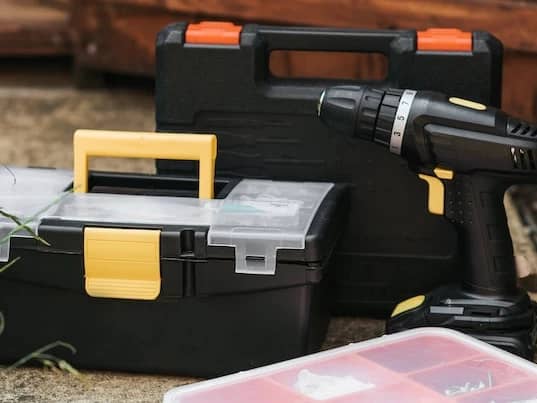A well-functioning garage door seal is crucial in protecting your home from the elements, and pesky pests, and ensuring energy efficiency. Over time, these seals can wear down, leaving you with a less-than-effective barrier between your garage and the outside world.
Luckily, replacing your garage door seal is a manageable DIY project that can save you money on professional repairs. In this comprehensive guide, we will walk you through the steps to identify signs of wear and replace your damaged seal effectively.
Key Takeaways
- Replacing your garage door seal is crucial for protecting your home from outside elements such as pests, water damage, and drafts while improving energy efficiency to save you money on utility bills.
- Signs that indicate a need for replacement include visible cracks or gaps in the seal, drafts entering the garage, and water or debris seeping into it.
- DIY instructions involve removing the existing seal carefully before measuring and cutting new weatherstripping with precision. Using appropriate tools and materials is important.
- By taking action promptly to replace damaged seals rather than waiting until problems have escalated, homeowners can avoid costly repairs. A well-maintained garage ensures optimal environmental conditions both for people and possessions stored inside.
DIY Guide: Step-by-Step Instructions For Replacing Your Garage Door Seal

Learn how to replace your old, weathered garage door seal with our comprehensive DIY guide. With step-by-step instructions and helpful tips, you can easily protect your home from outside elements and pests while saving on energy costs.
Tools And Materials Needed
To replace your garage door seal, you will need a few essential tools and materials. These include the replacement weather seal, scissors or a utility knife to cut the new seal to size, and a flathead screwdriver for removing the old seal.
It’s crucial to select high-quality materials that are durable enough to last long periods without wearing out easily. For instance, choose a flexible rubber material that is resistant to harsh outdoor conditions such as rain and sunlight.
Removing The Existing Seal
Before installing the new garage door seal, it is crucial to remove the existing existing bottom seal properly. Start by closing the garage door and locking it in place. Carefully detach the old seal starting from one end using a flathead screwdriver or pliers until you can grip it comfortably with your fingers.
Once you have removed all sections of the old seal, use a scraper or sandpaper to clean any remaining adhesive or debris left behind. Taking this extra step ensures that there is no interference between the new weatherstripping and your garage’s surface.
Replacing an old or damaged seal enables better energy efficiency while protecting against outside elements such as pests, water damage, drafts along with improving indoor air quality by reducing dust infiltration from outside sources into homes closed off from outside air.
[Keywords: Replacing Garage Door Seal (DIY Guide), removing garage door seals gasket, rubber weather strip replacement]
Measuring And Cutting The New Seal
Before installing the new garage door seal, it’s important to measure and cut it properly for a precise fit. The tools you’ll need for this step include a tape measure and scissors or utility knife.
Start by measuring the width of your garage door opening to determine how long the new seal needs to be.
Once you have your measurements, carefully cut the new weatherstripping with sharp scissors or a utility knife. It’s always better to make multiple small cuts than one large one, as this will help prevent mistakes and ensure that your cuts are straight and even.
Installing The New Seal
Now that you’ve removed the old garage door seal, it’s time to replace the garage door seal. Start by measuring the width of your garage door and cutting the new seal to fit.
Make sure you cut it a little longer than necessary so that it overlaps at each end.
Next, use an adhesive or nails provided in your weatherproofing kit to attach the new seal.
Be careful not to pull too tightly on either side as this can cause uneven spacing between seals which could allow water or debris inside again. Finally, check for proper alignment and test your new seal by opening and closing your garage door several times while observing how well sealed off from outside elements it remains.
This easy DIY process can be completed in just a few hours with minimal tools required, saving homeowners potentially hundreds of dollars compared to hiring someone else for labor costs alone!
Checking For Proper Alignment And Testing The New Seal

After installing the new garage door seal, it’s important to check for proper alignment and a tight seal. Start by closing the garage door and inspecting all sides of the seal to ensure there are no noticeable gaps or misalignments.
Then, turn off all lights inside the garage and look for any daylight seeping through around the edges of the seal.
Another way to test your new door seal is by pouring water along the bottom edge of your closed garage door.
Remember to follow manufacturer instructions throughout every step in order to guarantee optimal performance from your new door seal replacement.
The Importance Of Replacing Your Garage Door Seal
Replacing your garage door seal is essential for protecting both your garage and its contents from outside elements such as pests, water, and debris while also improving energy efficiency to save you money on utility bills.
Protection From Outside Elements
One of the main benefits of replacing your garage door seal is the protection it provides from outside elements. A properly sealed garage door acts as a barrier against inclement weather, such as rain, snow, and wind.
Additionally, when strong winds sweep across your property, they can force dust and debris into your garage through these same weak points in the seal. This not only creates a mess but also affects the air quality within the space which could trigger allergies for you and your family members.
Prevention Of Pests And Rodents
One critical reason to replace your garage door seal is to prevent pests and rodents from entering your garage. The garage provides an ideal environment for critters, as it’s typically dark, damp, and often contains food sources like pet food or birdseed.
Rodents can also chew on wiring, woodwork, and even concrete in search of nesting materials or water. In addition to being unsanitary and potentially damaging your property, these unwanted guests can pose a health risk by spreading diseases or causing allergic reactions.
By replacing your garage door seal promptly when needed, you can help keep out unwelcome visitors and protect both your family’s health and the integrity of your home.
Energy Savings
Replacing your garage door seal is not only important for protecting your belongings from outside elements and pests, but it can also lead to energy savings.
A damaged or worn-out seal allows air to enter and exit your garage, which can have a significant impact on the temperature inside. This means that during hot summers or cold winters, you’ll be losing valuable heat or cool air.
By replacing your garage door seal with weatherproofing materials like rubber seals or vinyl stop molding, you can effectively insulate your garage and improve energy efficiency.
In addition to keeping the elements at bay, a well-sealed garage will save you money on heating and cooling bills over time.
Protection For Your Car And Belongings
One of the key benefits of replacing your garage door seal is the protection it provides for your car and belongings. A damaged or worn-out seal can allow water, debris, and pests inside your garage, putting your possessions at risk.
For example, a neglected seal may leak water onto valuable equipment such as gardening tools or even flood parts of a vehicle motor which will result in repair costs that can add up quickly over time.
Additionally, moisture and humidity from rainwater damage wooden finishes on furniture while attracting mildew growth on fabrics like blankets causing an unpleasant odor around stored goods.
Signs That Your Garage Door Seal Needs Replacing

If you’ve noticed drafts entering your garage, water or debris seeping in, or visible cracks and gaps in the seal, it’s time to replace your garage door seal – read on for our step-by-step DIY guide.
Drafts Entering Your Garage
If you notice a breeze inside your garage, it’s likely due to drafts entering through gaps and cracks in the door seal. These drafts not only make your garage uncomfortable, but they can also increase your energy bill by allowing warm or cool air outside.
Not to mention, it can create a prime entry point for pests and rodents seeking shelter from the elements. By replacing your garage door seal, you can prevent these drafts from coming in and keep unwanted pests out.
It’s important to act quickly once you notice drafts as it could lead to more significant issues like mold growth or damage to stored items if left unaddressed.
Water Or Debris Seeping In
Water or debris seeping into your garage can be a frustrating and potentially damaging problem. It can cause damage to flooring, walls, and stored items in your garage.
Additionally, dampness makes the perfect breeding ground for mold and mildew which isn’t safe for you or your family. Fortunately, it’s often an easy fix.
By removing any damaged weatherstrip and fitting a new one that fits snugly against the floor, you’ll prevent water from flowing in through gaps between the bottom of your garage door and its frame.
Visible Cracks Or Gaps In The Seal
If you notice visible cracks or gaps in your garage door rubber seal, it’s time for a garage door seal replacement. These cracks and gaps may seem small, but they can let in drafts, water and debris, as well as unwanted pests and rodents.
Over time, wear and tear on the seal can cause it to gap away from garage doors. This not only allows dirt and moisture into your garage but also makes it harder for your heating or cooling system to maintain a comfortable temperature inside.
Replacing your garage door seal is crucial for maintaining energy efficiency while keeping pests out of your space.




